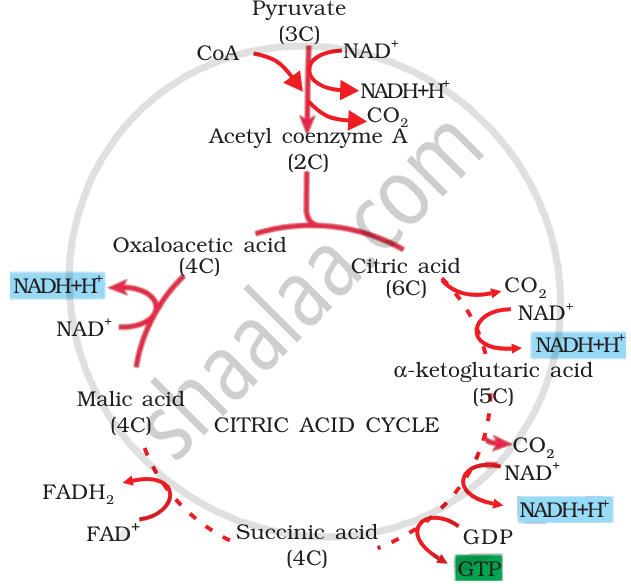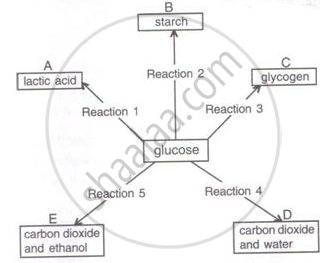Advertisements
Advertisements
प्रश्न
Give the schematic representation of an overall view of Krebs' cycle.
उत्तर
The Krebs cycle is a process that occurs in mitochondria. These require many enzymes and electron transport systems (ETS).
The acetyl CoA then enters a cyclic pathway, the tricarboxylic acid cycle, more commonly called Krebs’ cycle after the scientist Hans Krebs, who first elucidated it.

APPEARS IN
संबंधित प्रश्न
Tick the most appropriate answer.
Frogs breathe through the
State if the following statement is true or false. Correct the statement if it is false.
The microscopic air sacs present in the lungs are called bronchi.
Given below are chemical reactions (1 to 5) involving glucose and five other chemical products (A-E).

Write the reaction number of the following:
(i) Anaerobic respiration in plants __________
(ii) End products in aerobic respiration ____________
(iii) Reaction occurring in liver _________
(iv) Anaerobic respiration in animals ________
(v) Storage in the liver _________
Fill in the blank:
In living cells glycolysis occurs in ______.
Write scientific term for the following:
The powerhouse of the cell.
Complete the following statement by choosing the correct alternative out of those given below.
In respiration, temperature
The question has four options. Choose the correct answer:
Mitochondria is the storage house for:
Answer the following question.
How would you demonstrate that yeast can respire both aerobically and anaerobically?
Name the phenomenon by which carbohydrates are oxidized to release ethyl alcohol.
Which of the following is present in Electron transport system (ETS)?
Study the following statements with respect to Krebs cycle and select the correct option.
- As per need, acetyl CoA or some other intermediates like a-ketoglutarate, oxaloacetate of Krebs cycle are used as precursors for synthesis of fatty acids, glutamic acid and aspartic acid respectively.
- Various reactions of Krebs cycle involve step-wise oxidation of acetyl part of acetyl CoA leading to release of energy and C02.
Pyruvic acid formed in glycolytic pathway is ______.
From the following identify the reactions in which ATP is NOT used.
β-oxidation of fatty acids produces ____________ as the end product.
Complete the following reaction.
C6H1206 + 602 → 6C02 + ______ + 38 ATP
Following are the intermediates and end products formed during glycolytic pathway. Arrange them in the order of their occurrence.
- Phosphoenolpyruvate
- 2 - phosphoglycerate
- 1, 3 - bisphosphoglyceric acid
- 3 - Phosphoglyceric acid
- Pyruvic acid
What are the products obtained by anaerobic respiration in plants?
